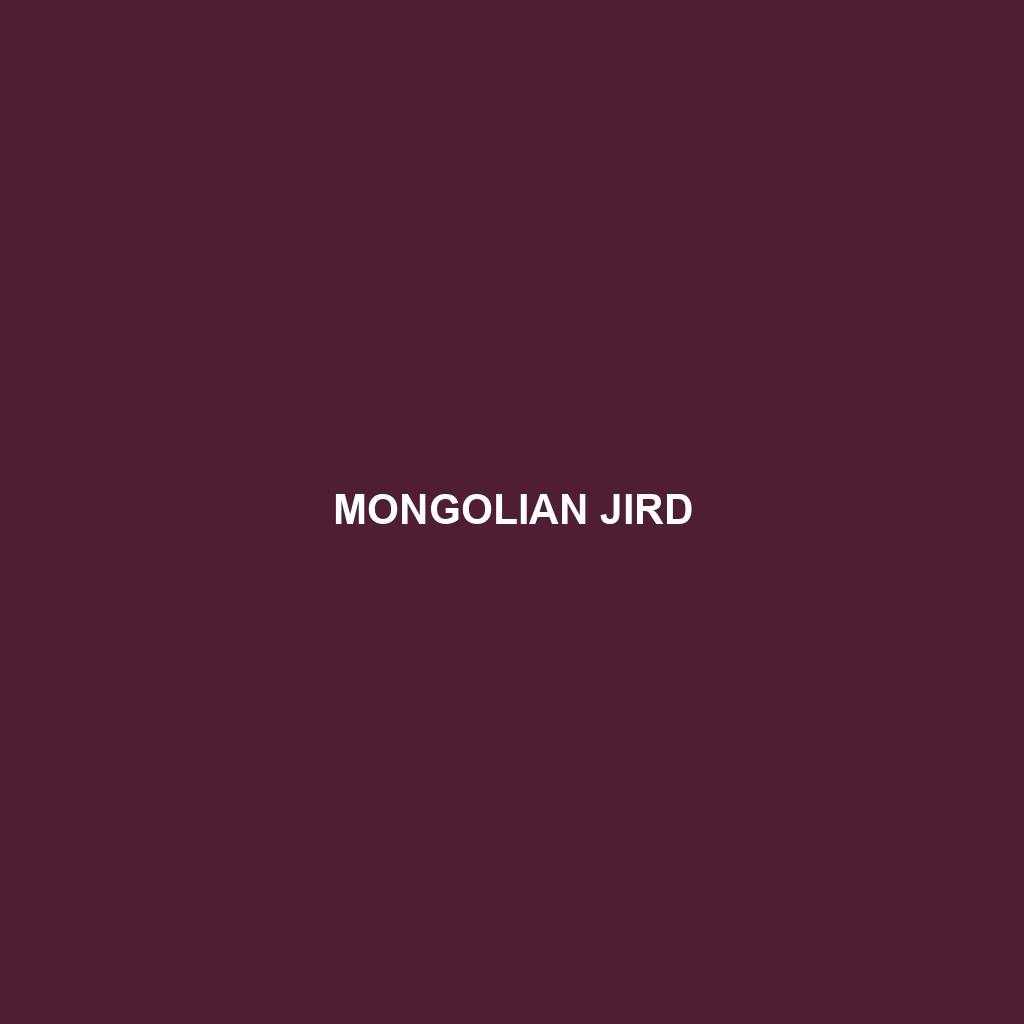Mongolian Jird: A Fascinating Rodent Species
Common Name: Mongolian Jird
Scientific Name: Meriones unguiculatus
Habitat
Mongolian Jird is primarily found in the vast steppes and semi-desert regions of Mongolia and northern China. This species prefers arid environments characterized by sandy or loose soil, which facilitates their burrowing behavior. They typically inhabit grasslands and shrublands where vegetation is sparse but sufficient for their dietary needs.
Physical Characteristics
The Mongolian Jird is a medium-sized rodent, measuring approximately 8 to 10 inches in length, with a tail that is often as long as its body. They exhibit a sandy brown or yellowish fur coat that provides excellent camouflage against their natural habitat. Notable features include large, round ears, a pointed snout, and strong hind legs, which enable them to make quick escapes from predators. Their distinctive cheek pouches allow them to store food for later use.
Behavior
Mongolian Jirds are primarily nocturnal, engaging in most of their activities during the cooler night hours. They are known for their burrowing habits, using intricate tunnel systems to protect themselves from predators and extreme weather. Socially, they can exhibit both solitary and communal behaviors; however, during the breeding season, males are often solitary to compete for mates.
Diet
The diet of the Mongolian Jird consists mainly of seeds, grains, and vegetation. They have a strong preference for grasses and herbs, which they gather and store in their burrows. This rodent plays a significant role in seed dispersal within its habitat, contributing to the ecosystem’s health and balance.
Reproduction
Mongolian Jirds typically breed during the warmer months, with peak breeding occurring in late spring and early summer. Females usually give birth to litters ranging from 3 to 10 offspring after a gestation period of about 25 days. The young are weaned at around three weeks of age and reach sexual maturity by approximately two months. Notably, the females display strong maternal instincts, nurturing their young within the safety of their burrows.
Conservation Status
The Mongolian Jird is currently evaluated as a species of Least Concern by the IUCN Red List. However, habitat destruction and climate change pose potential threats that could impact their populations in the future. Efforts to monitor their populations and conserve their habitats are crucial for their continued survival.
Interesting Facts
1. The Mongolian Jird is often kept as a pet due to its relatively docile nature and engaging behaviors.
2. They are remarkable diggers and can create extensive tunnel systems that can reach several meters deep.
3. This species has become popular in laboratory research due to its adaptability and sociability.
Role in Ecosystem
As an important herbivore, the Mongolian Jird plays a significant role in its ecosystem by helping to control plant populations and facilitating seed dispersal. Their burrowing activities aerate the soil, promoting the health of local flora and benefiting other wildlife. In this way, they contribute to the overall biodiversity and sustainability of their habitat.
